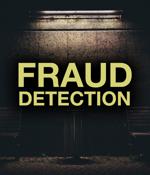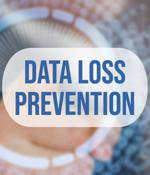Security News

Interestingly, the expectations for a friction-free journey have made financial institutions rethink the false dichotomy between maintaining stringent security and a positive customer experience. Savvy financial institutions are realizing that they don't need to choose between customer experience and fraud loss; rather, they need to identify and implement more efficient and effective tools when it comes to verifying with whom they are conducting business.

There's just one problem: most fraud prevention companies aren't heeding the signals and drinking the DevOps deployment Kool-Aid. Let's look at how other fraud prevention companies can benefit from this approach-and what it will take for fellow fraud-stoppers to embrace the DevOps deployment model.

European merchants spent nearly €7 billion on fraud detection and prevention in 2021 alone - more than three times the value lost to fraud in the same year, CMSPI estimates. These practices are unsustainable for the continent's merchants, who are currently facing compound annual fraud growth of 1.5%. As retailers' margins are squeezed, fraud and its wider impacts are just another inflationary pressure that see merchants and good customers losing out.

The global fraud detection and prevention market is expected to grow from $26,511. Fraud detection and prevention systems are software applications used to provide analytical solutions for fraud incidents and help identify or prevent future occurrences.

Fraud detection is simply a necessity nowadays, but it's only the beginning of what organizations need to do to protect themselves and their users. Knowing what's fraud is only half the battle: you need to be able to catch it in time to prevent the fraud from succeeding.

The fraud detection and prevention market is expected to surpass $100 billion by 2027, as reported in a research study by Global Market Insights. The internal fraud type is anticipated to grow at over 25% CAGR between 2021 to 2027 due to the rising collusion among employees.

The global enterprise data loss prevention market is projected to grow at a CAGR of 21.03% to reach $6.265 billion by 2026, from $1.647 billion in 2019, according to ResearchAndMarkets. The increasing rate of data breaches along with other factors such as DLP as a service, DLP functionality extending into the cloud, and advanced threat protection against these data breaches are the major factors driving the enterprise data loss prevention market.

The global fraud detection and prevention market size is expected to reach $62.7 billion by 2028, registering a CAGR of 15.4%, according to ResearchAndMarkets. Thus, to mitigate these frauds, while securing customer as well as business data, the demand for fraud detection and prevention solutions is anticipated to witness an upsurge over the forecast period.

With multiple layers of security in place and biometrics as the central authentication factor, organizations have a future-proofed fraud prevention platform that offers protection against current threats-and whatever new threats the next crisis brings. Layered security involves combining fraud prevention measures like environment detection and anti-spoofing with multimodal biometrics, all underpinned by an AI-powered risk engine that aggregates data from the various layers to generate a risk score for any given customer engagement.

While organizations recognize third-party threats expose them to great risk, many organizations fail to take adequate measures to mitigate it. Current third-party risk prevention strategies leave organizations vulnerable.